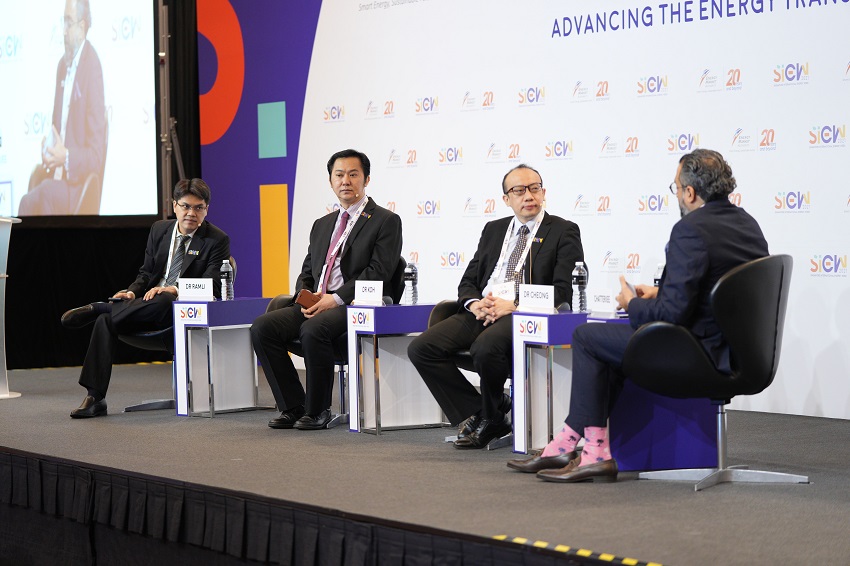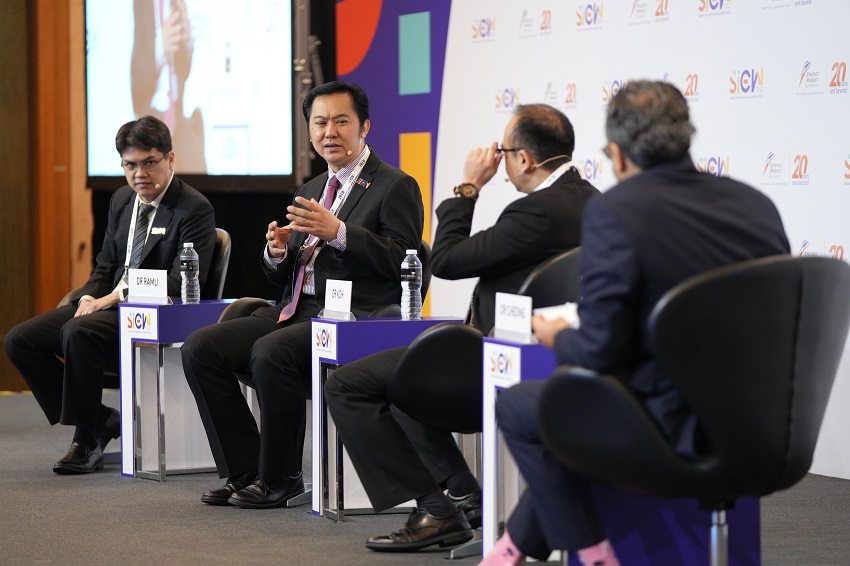As more renewable energy enters the mix, connectivity will form the bedrock of the clean energy transformation. Tan Wei Chuan reports

In a SIEW Energy Insights session co-presented by the Agency for Science, Technology and Research (A*STAR) and the Singapore Battery Consortium (SBC), industry experts discussed how energy connectivity will be intricately linked to Singapore’s energy transition as power systems undergo radical change.
d0e87866cb3d6c60bd32ff0000579d7f.jpg )
According to Dr Davy Cheong, Deputy Director, Singapore Battery Consortium, connectivity will be essential to energy resiliency and addressing intermittency challenges as renewables make up a growing share of the energy mix.
Moulding a new era of energy systems
Another key aspect of the energy transition journey is the development of energy storage systems (ESS) to ensure grid security and stability. Dr Koh Leong Hai, Programme Director of the Smart Grid and Power Electronics Consortium Singapore (SPECS) shared that they are currently exploring whether the power system stability can be improved with strategies such as grid-connected or distributed ESS.
dae87866cb3d6c60bd32ff0000579d7f.jpg )
Dr Koh also elaborated on another key project where SPECS is examining the best approach to locate Distributed Energy Storage Systems (DESS) installations to mitigate the intermittency of solar energy. The Consortium is studying the possibilities of installing DESS at HDB void decks, and how to enhance the state of charge (SoC) value of batteries to allow for more energy reserves.
The shape of electric vehicles and battery developments to come
Another area of interest for energy storage lies with the influx of electrical vehicle (EV) batteries. Dr Cheong noted that this has the potential to transform the energy landscape in Singapore. He shared the possibilities available—from vehicle-to-grid (V2G) technology which draws unused power from EVs into the smart grid and second-life use of EV batteries, to recycling and battery design, testing and innovation.
Furthermore, EV batteries and V2G connectivity will need systems that can analyse and monitor demand and control supply.
d5e87866cb3d6c60bd32ff0000579d7f.jpg )
Dr Muhamad Azfar Ramli, Deputy Director, Systems Science Dept, Institute of Higher Performance Computing, A*STAR, shared his views on the use of data analytics and artificial intelligence to help data scientists identify data gaps—particularly on a large scale. He added that high-performance simulations will also be needed to shorten the simulation time.
Regarding EVs, Dr Ramli said his agency is tackling policy-related challenges to meet Singapore's goals for the electrification of transport. Questions include how to optimally deploy EV chargers across Singapore to maximise drivers' convenience and utility, while also minimising the impact on the grid.
What's next for Singapore?
During the Q&A session, moderator Anurag Chatterjee, Head of Sales for Renewables and Power Asia Pacific Energy Systems, DNV, raised the question of when Singapore will develop a standards roadmap.
dee87866cb3d6c60bd32ff0000579d7f.jpg)
In response, Dr Cheong explained that setting standards would be an important focus as guidelines are needed for the many areas of battery use. He cited that the launch of the Technical Reference 77 (TR 77) last year, guided enterprises on developing safe and reliable ESS for deployment in a topical urban environment.

Going forward, Dr Koh spoke on the need for a strong business case to convince industry partners of the commercial viability of what Singapore has to offer in energy storage, while ensuring that there are tools to help them innovate and scale up. This would attract opportunities for Singapore as well as the region.
Stay tuned on this Live Blog or follow us on Twitter (@SIEW_sg) for updates on the day’s discussion.